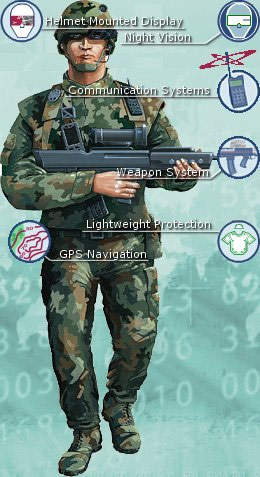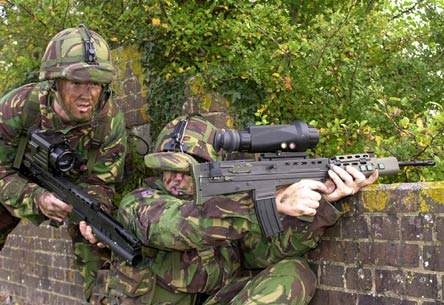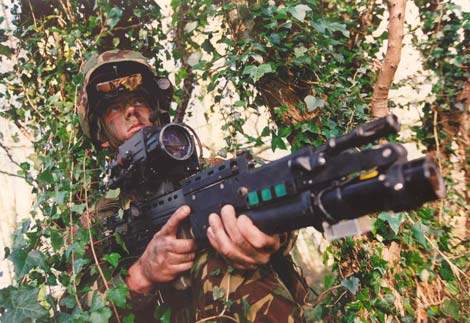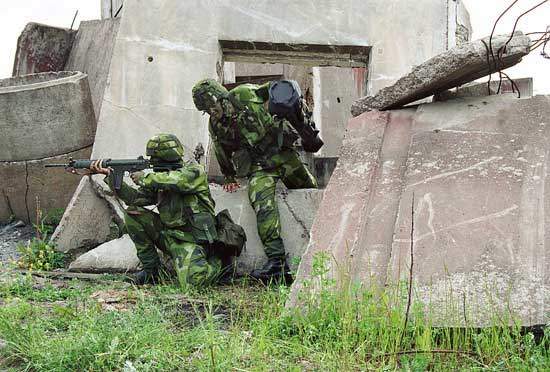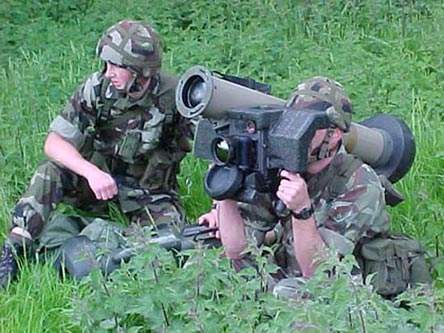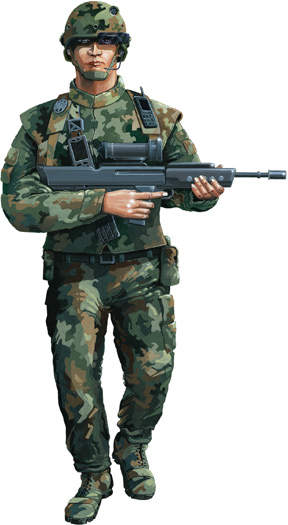The future infantry soldier technology (FIST) programme is being managed by the dismounted close combat integrated project team at the UK Ministry of Defence Procurement Agency at Abbey Wood, Bristol.
Thales UK was selected in March 2003 for the assessment phase of the FIST programme. The two-and-a-half-year assessment phase investigated the options in technology, methods, and processes.
Future Infantry Soldier Technology trials
The first major experimental trial for the FIST project under the assessment phase took place in January 2005 at the army’s Salisbury Plain training area.
70 soldiers took part and each soldier was equipped with experimental systems including ‘off-the-shelf’ radios, computers, GPS, weapon sights and cameras. Effectiveness was compared with soldiers equipped with conventional infantry systems.
Trials data has been used to inform design decisions for the development of the FIST V2 system, which began trials in October 2005.
FIST trial phase contractors
In June 2005, Thales announced that the following would be providing services for the FIST V2 trials: AEA Technology of Thurso (power management including batteries); Chelton Defence Communications of Blackburn (section commander’s long range radios; NP Aerospace of Coventry (helmets and body armour); Police Resource International of Exeter (load carriage subsystem and integration of body armour); Selex Communications of Chelmsford (individual soldiers’ short-range radios); Thales UK of Wells (command and control software for dismounted close combat, including mission planning and situational awareness).
An extension to the FIST V2 trials took place in November 2006. Four teams competing for the command, control and communications system took part: Selex Communications – soldier system radio (SSR) and advanced situational awareness software; Thales – Vector Tetra radio and soldier integrated combat system (SICS); ITT soldier radio and Cobham integrated digital soldier system (IDSS); Raytheon MicroLight radio and Cobham soldier radio and integrated digital soldier system (IDSS). In May 2007, Raytheon’s MicroLight radio was chosen as the communications system for FIST V2.
In September 2009, the UK MoD placed a £150m contract with Thales UK for the delivery and in-service support of STA (surveillance target acquisitionz) system. Deliveries are expected to be completed in June 2014.
In June 2011, Vectronix was awarded a contract by Thales Prime Contract Management Office (PCMO) to supply 1,400 MOSKITO multi-function target acquisition units for the FIST. The contract brings the total orders to over 4,000 units. Meggitt Defence Systems received a £13m contract from UK MoD in November 2011 to upgrade Dismounted Close Combat Trainer (DCCT) to support FIST integration.
35,000 sets of FIST kit are expected to be procured and the systems will be deployed by the British Army, the Royal Air Force Regiment and Royal Marines. FIST will enter service between 2015 and 2020.
The FIST programme is in early and in many areas speculative development and the scope of the design, in concept, performance and content continues to evolve.
UK FIST future soldier programme aims
The FIST programme covers the development of all areas of technology for the dismounted infantry soldier and emphasises the integration of systems.
The FIST system will provide the soldier with improved situational awareness, lethality and survivability.
The systems will be assessed on a measure of improved capability and on soldier friendliness with ease and comfort of operation.
The five main areas of capability are identified as C4I (command, control, communications, computers and intelligence), lethality (weapons and sights), mobility (navigation, size and weight of equipment), survivability (clothing, stealth, body armour) and sustainability (logistical considerations).
It is not envisaged that each infantry soldier will be issued with a FIST system. The unit commander will specify the FIST systems tailored to the operational and mission requirements.
Awareness
A main strategy of the FIST programme is that the infantry soldier is a key element of the UK’s network-enabled military force.
The FIST soldier’s communications system provides communication up to company level. Above company level, communication is via the Bowman integrated combat radio system.
The soldier will have a small encrypted radio that operates over a line-of-sight, short range to other members of his unit. The patrol leader’s radio will communicate with the forward operating base.
The network system will reroute automatically to allow continuity of operation when a communications link is broken, for example when a soldier moves over a hill or ridge.
Voice and data communications can be relayed to the soldier directly or via drone relay links from headquarters, which have downloaded battlefield commands, information and images from forward observers, unmanned air vehicles, remote sensors and other airborne or satellite surveillance assets.
The soldier will have a global positioning system, a dead reckoner and map displays to increase his situational awareness. The use of helmet displays, wrist-mounted displays, hand-held and laptop computers and communications systems will be considered.
Lethality
The enhanced FIST lethality capability is mainly through improved sighting and weapons. The use of non-cooled observation and sighting systems saves weight and logistic requirements.
The infantry is currently equipped with the 5.56mm SA80 assault rifle. The SA80 will be fitted with an enhanced sighting system on the weapon or linked to the soldier’s helmet mounted sight. A linked sighting system allows the soldier to fire round corners at the target while remaining in a protected position.
Other weapons available to the soldier include MBT LAW and Javelin anti-tank missiles and high-explosive fragmentation grenade (HEFG) launchers.
To engage targets hidden in trenches or behind shelters, the soldier can measure the range of the target with a laser rangefinder. The range data is downloaded to the weapon’s round and the overflying weapon round detonates at the designated range to strike the hidden target.
Clothing
The clothing will reduce the soldier’s visual, radar and infrared signatures as well as providing personal temperature control and environmental protection. The clothing might have built in wires or a type of wireless technology such as Bluetooth to interconnect the FIST components.
The grades of body armour protection will be selected for different operational requirements.
An integrated helmet will provide ballistic protection and an interface to other elements of the battlefield network. The helmet-mounted display can show the battlefield situation, with wearer’s position, positions of friendly and hostile troops and equipment and prioritised targets, as well as the downloaded imagery from his weapon sight.
NBC protection
The infantry soldier will receive warning of a nuclear, biological chemical warfare (NBC) hazard via the battlefield information system applications (BISA). BISA, under development by SciSys, operates on the Bowman communications system and is linked to the Royal Air Force command control and information system (CCIS), the Royal Navy command support system (CSS) and the joint operational command (JOCS) structure. New lightweight and breathable materials are developed for NBC protection.
Power supplies
Future infantryman power requirements are estimated at an order of magnitude higher, i.e. ten times higher than currently used. Designs will continue to be based on advanced lithium ion battery technology until emerging technologies such as fuel cells and fuel cell chargers become more mature.
QinetiQ, at Farnborough, is investigating FIST power supplies, including fuel cell configurations and the application of QinetiQ’s ammonium borate hydrogen generator.
ABSL Power Solutions Limited (formerly AEA Technology Battery Systems) produced a modified power system for the FIST V2 trials, which includes two lithium ion battery packs, each integrated in the SA80 rifle magazine pouch and connected to the power anagement unit (PMU). The PMU provides power for the GPS receiver, the situation awareness computer, thermal imaging and image intensification sights, and voice/data radios.
The UK MoD is funding the development of a handheld fuel cell for recharging conventional batteries by an industrial team including Black and Decker, Ineos Chlor, Intelligent Energy, and QinetiQ.
In early 2004, the UK MoD announced a bilateral information exchange agreement with USA, covering development of power sources, power management, fuel cells and batteries.
US Defence Sector: Market Opportunity and Entry Strategy, Analyses and Forecasts to 2015
Detailed analysis and forecasts of the US defence market are available from our business information platform Strategic Defence Intelligence. For more information click here or contact us: EMEA: +44 20 7936 6783; Americas: +1 415 439 4914; Asia Pacific: +61 2 9947 9709 or via email.

